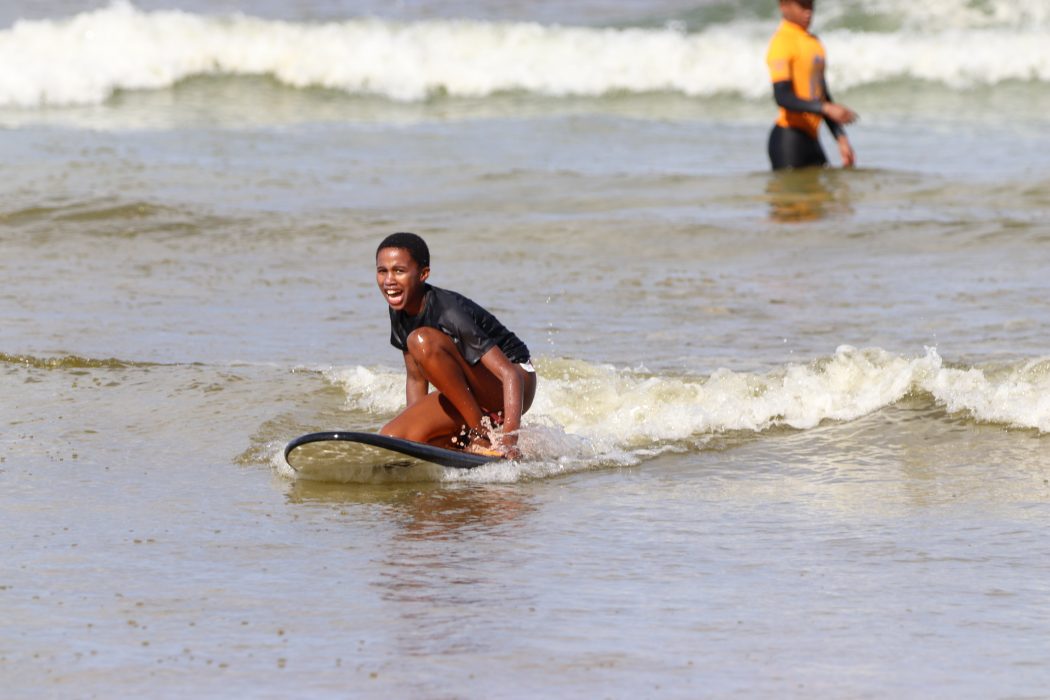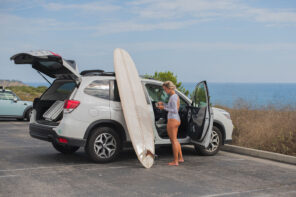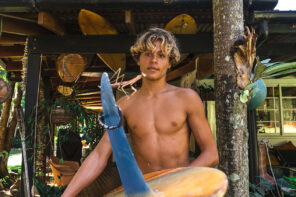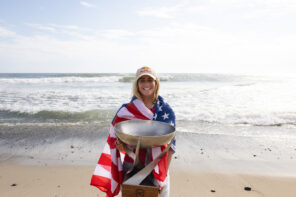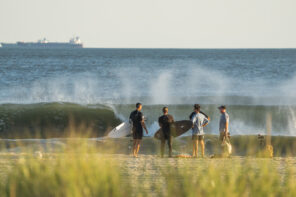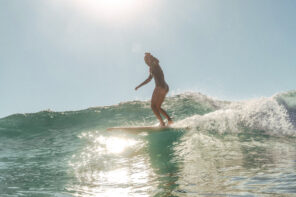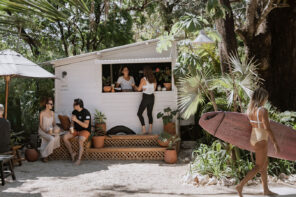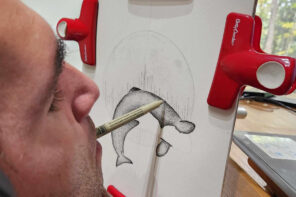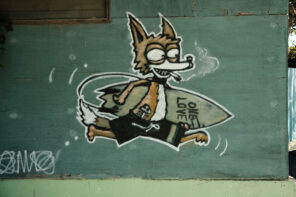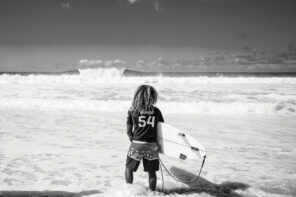Presented by

A conversation with the Black Girls Surf Founder on the payoff of dedication and hard work
Rhonda Harper is the founder of Black Girls Surf. For anyone else, that’s huge. But for Rhonda, that’s just the widest brimmed of the many styles in her very large hat collection. She is a Coast Guard veteran, a former fashion designer, a journalist, learned carpentry in an effort to help uplift communities in Africa and across the world, and currently on the judging panel of The Lemonade Stand, presented by Faherty. There are no idol hands here. With the mission of understanding every facet of her industry Rhonda created Black Girls Surf in order to facilitate representation in the surf community—representation not just for the black community but specifically black little girls. While we wish we had this conversation bobbing on a wave together, Rhonda was kind enough to talk with Whalebone all the way from South Africa to tell part of her story, how Black Girls Surf came to life and to make us feel like genuinely very lazy human beings in comparison.
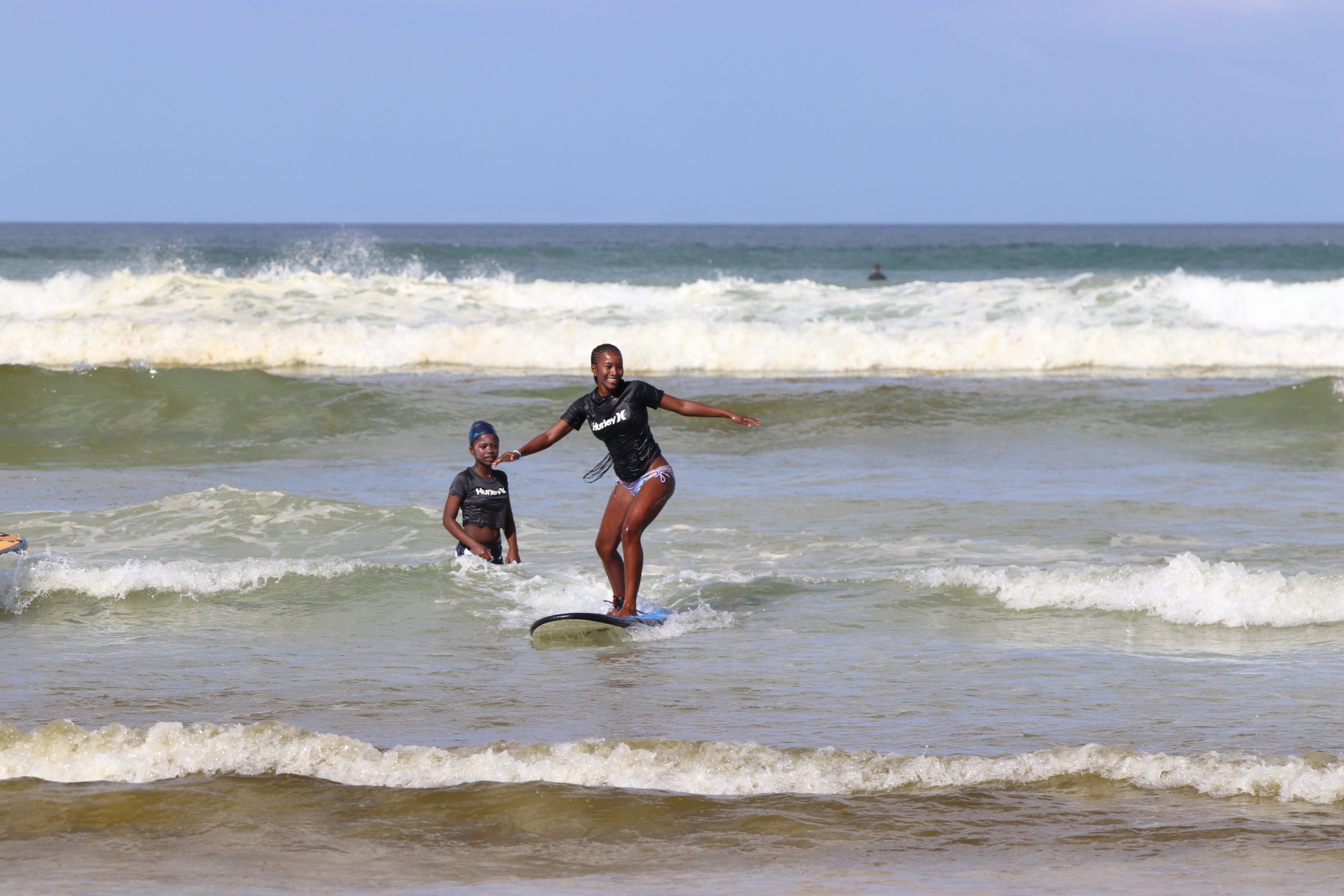
Whalebone: What led you to surfing? and what was your earliest introduction to the water?
Rhonda Harper: My earliest introduction to the water was going to a place called Parkwood Park in Kansas City, Kansas. It was an African-American community park, and in that park, they had two pools. They had a big pool and a little pool and my father took me to that pool for the first time in my life. I think I was four. That’s the exact moment that I knew I wanted to be in the water.
My dad was in the Coast Guard and his way of thinking is that swimming is not just recreational, it’s a life skill. So, my very first experience in the water is my dad explaining what treading the water is—then because I was so little and so skinny and light, my dad pitched me like a basketball into the big pool and then told me to tread water. He was like my swim coach, if I had had one. But that love of water is something he passed down all the way down to his great-grandkids.
WB: You were in the coast guard too, is that right?
RH: That’s right. They got me surfing. One of the recruiters was like, “Come on down, we’re going to Ocean Beach in San Francisco, we’re going to be surfing.” Anywhere you go in the Coast Guard, there’s going to be water.
Knowing that my father came from that background [Coast Guard], I was just like, “Let me go sit with you guys and listen to what you have to say.” Then they started talking about the different careers and your swimming abilities. I had a pool in my backyard, so I knew what my swimming abilities were. My first love was search and rescue. The second love was search and seizure and then the third was just being on a cutter somewhere and picking the places that I wanted to visit and ideally surf. I picked the places where I could really get some surf, I picked warm… I think Puerto Rico and Florida. Hawaii was one of the alternates. When I got my papers back, it was for Alameda which was 20 minutes from my house, naturally.
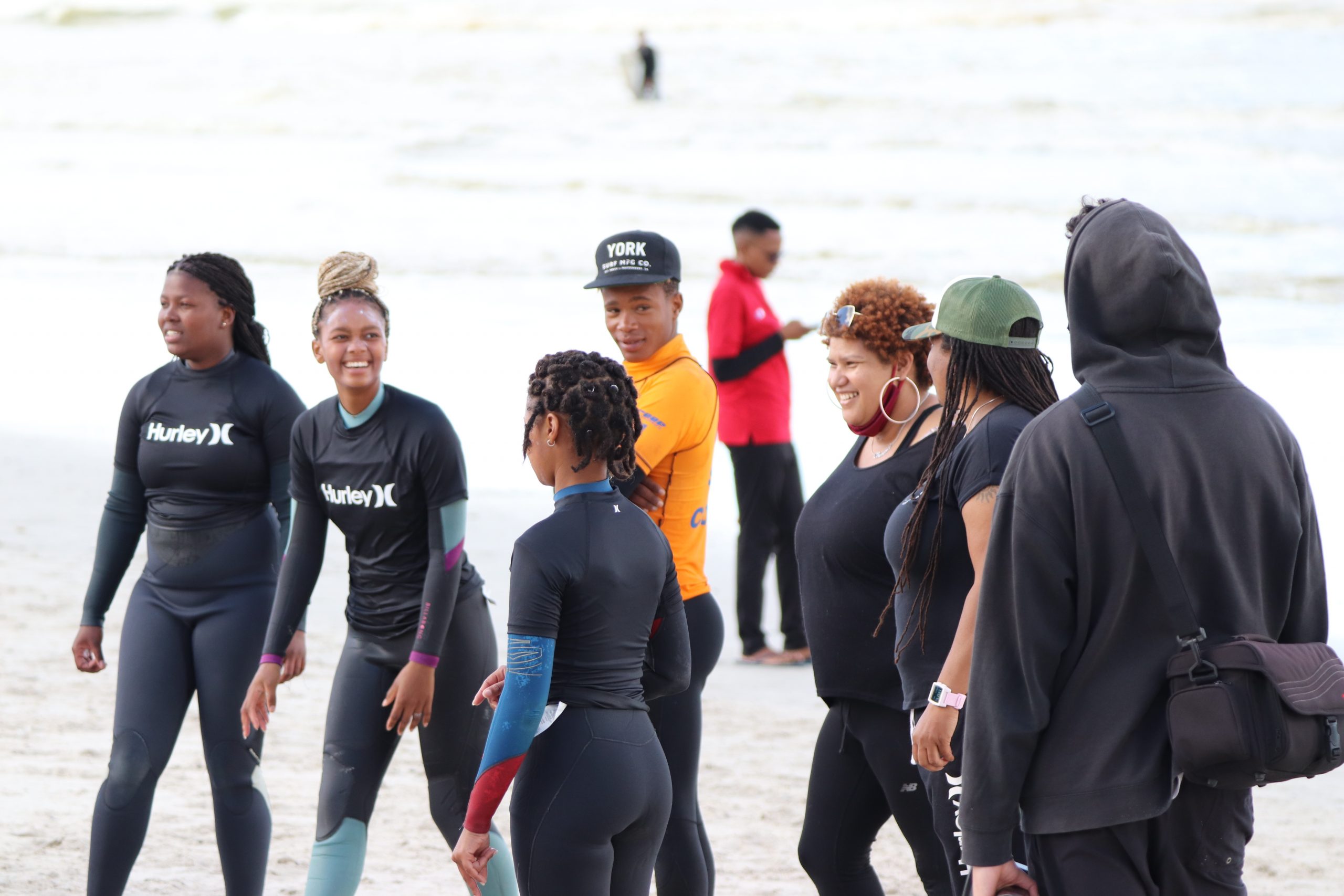
WB: How did surfing transition from a hobby outside of the Coast Guard to the career that you have now and Black Girl Surf the foundation?
RH: When I was in the military, I was injured and they had to rehabilitate me through schooling—through their VOC [vocational rehab] programs. But before I went into the military, I designed for celebrities in Los Angeles. So I thought, well, let’s get an educational background [in clothing] while I’m rehabilitating myself. I was a celebrity designer for a long time. When you reach a certain level as a celebrity designer, you either are going to start your own line like Halston or whoever—and I thought I was going to be the next Gucci but my mindset was let’s put together a clothing line that is Afrocentric but surf influenced because I was still a surfer. When I was doing my research for that vision I couldn’t even Google what I wanted, there was nothing like it. So then I thought okay, how can I create this? This utopia that I wanted to see—so then I began building and putting together the building blocks for one T-shirt. I felt like I was Dorothy in the Wizard of Oz because there were a lot of rooms that I had to go down in order to hone my skills. I wanted to learn the back end of the surf industry because I know that the industry is driven by product.
If you can’t see it, you can’t be it.
If you want to start a fashion line, you have to get yourself included. I’m from a civil rights background. My parents were civil rights activists all through the sixties and the seventies. Even my mom, all the way up the 2000s. She always worked for the people and so when I saw that there was a need that needed to be filled, I figured out the steps that I need to take to get us where we need to be. From there, I created the Africa Surf International contest in 2012.
WB: What sorts of patterns or qualities, existing or lacking, did you see in the surf community that leads you to want to start Black Girls Surf?
RH: Africa Surf International was supposed to be an adaptive surf contest for the kids of Sierra Leone that had gone through the civil war and were amputees now. But, when I started researching Bureh Beach, I found 12 surfers. Young men that were surfing two hours out of Freetown and for a bunch of different reasons—not only because of a lack of representation in the modern surf industry but also our collective history of slavery and how we’d always been divided on to went to different lands, different continents. I wanted to bring this all together again, to showcase the talent that I’d witnessed during my journey as a journalist. I wanted to bring that home into a contest series where it could showcase so that sponsors could see that there was talent in the pan Afro community. That changes the lineup. That was the evolved vision behind African Surf International.
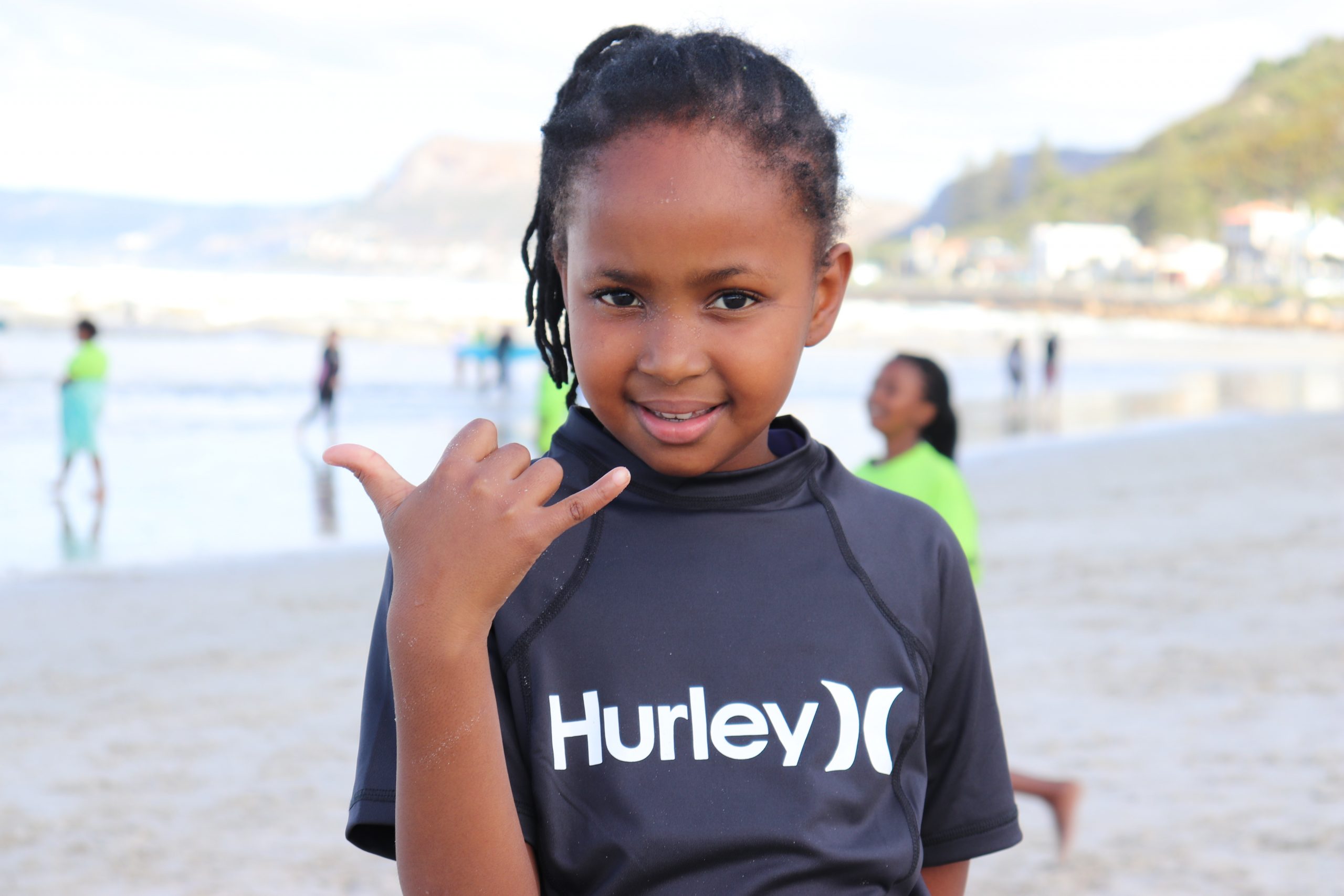
Then when we were planning the contest, we realized we had all these boys—and one girl, Kadiatu Kamara from Sierra Leone but we didn’t have any other girls to go against her. Now we had my co-captain as I call her, Imani Wilmot was the five-time champion in Jamaica, but it was like an unfair situation to put her against KK. So we started looking in the associations that are associated with the International Surfing Association. What we found was a lack of representation, a lack of Afro pan African girls around the globe participating in these games.
When we asked for participants for this contest, of course, we couldn’t find them because they’re not in the association. So then I thought, let’s look at the surf camps around West Africa because at least we could ship them in. We wanted to raise enough money to fly everybody in.
We went to individual camps in West Africa to see who we could find. Did my research and found Senegal. Senegal had a black woman walking through a surf camp. I immediately called the surf camp. Asked the surf camp who that person was, they told me it was Khadjou Sambe. I went to her DMs and I was just like, “Hey, do you want to compete in a professional surf contest in Sierra Leone?” and she said yes.
What we found was a lack of representation, a lack of Afro pan African girls around the globe participating in these games.
Just to be completely transparent, there were two girls that were very young. I think they were like 10 and 12. They were in South Africa but South Africa didn’t want to send their girls up to our camp in Sierra Leone. I understand that because they were very young. So Sni Makubu and Sam Kili were excluded from that list. But now both of them have both competed on the world stage.
In 2014 we started seeing the very first signs of the Ebola virus in West Africa. Eventually, we would have to close the contest down and put it on pause and we just postponed it until the pandemic passed, and then we can go back into the country and really look at the sociopolitical environment in each country because there’s always some type of conflict when you have something going on in that magnitude.
So, in 2016, the country opened but then Donald Trump was elected and then there came a travel ban. So, we couldn’t get KK out of Sierra Leone but we could get Khadjou out of Senegal. These girls were trained. They knew about heat structure. They had their maneuver down, the technical aspect, everything. They had a complete education going into this contest and so KK was again halted in Sierra Leone. Khadjou Sambe came to California. And that is the beginning of Black Girl Surf.
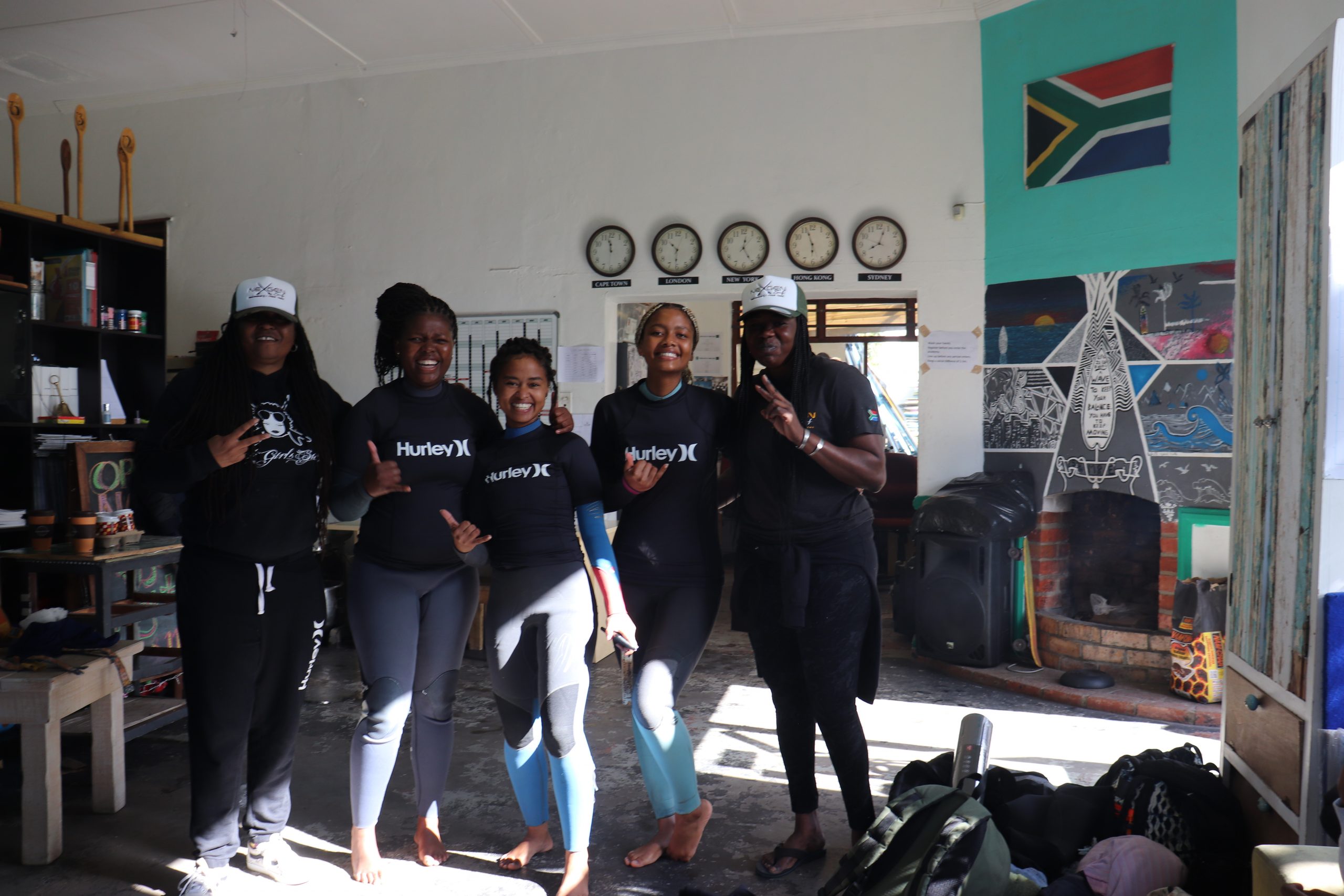
WB: And so where did the Olympics come in?
RH: On the way through this journey, we find out there’s a hint that the Olympics are coming.
So, when Khadjou gets to California, now, not only are we training her for the Africa Surf International, but now we’re training her for the Olympics. And gosh, the dynamic changed. As soon as I found out that her association didn’t have the money to send her and also that she’s had so many problems with her federation, we said, okay, I’m going to call the news.
WB: What does it mean to you personally to see black women and girls represented in the surf community now?
RH: When I was a little girl, I was fascinated with Barbie. It represented little girls. And then when they came out with Chrissy and she was black, we were just like, oh, this is wonderful. And a few weeks ago, Barbie came out with a Tokyo 2020 Barbie. The only girl that I know that is vying for the Olympics in 2020, who had dark skin and long hair was Khadjou Sambe. So, this is the representation that I wanted to see. I’m pretty sure it’s sold out by now but that doll meant so much as the result of all the work that we have put in, because if you can’t see it, you can’t be it. I have so much hope for the future.
WB: What’s the feeling that you’d want young girls and women to take away from Black Girls Surf or learning about Black Girls Surf?
RH: This is what I want. You can be whatever you want at any time of your life. There are a lot of people who say a girl that comes in this industry at 19 or 20 is too old. I’ve heard it a million times. Girls DM me all the time. Well, I was in this group and they said, oh, because I’m 20, this and that. There’s a 46-year-old bald man who is the symbol of surfing. You understand where I’m going here. So, don’t tell a Black woman they can’t accomplish something. Don’t tell another. It’s okay, you can be whatever you want if you put your mind to it. Never give up, that’s what I want to tell young girls.
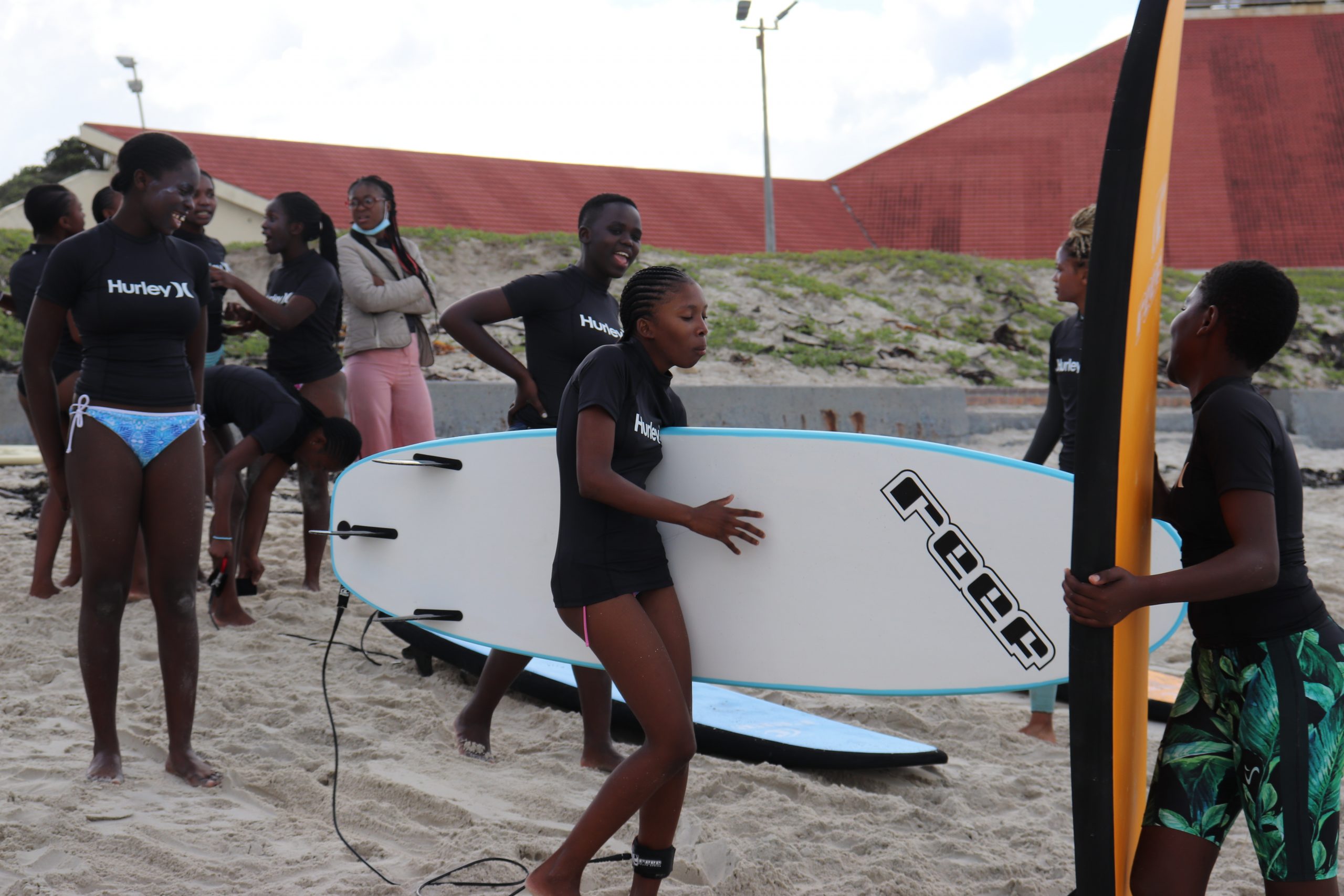
WB: What’s one lesson everyone can learn from the water?
RH: The water is healing. One day I’m going to tell my entire story and then you’ll understand why I’m so passionate about using surfing to heal. I can go out in the water any day. I don’t care if it’s just to get my feet wet or I’m putting my hand on the outside of the boat or just taking a dip because it’s hot. It’s like my church. It’s where everything disappears.

